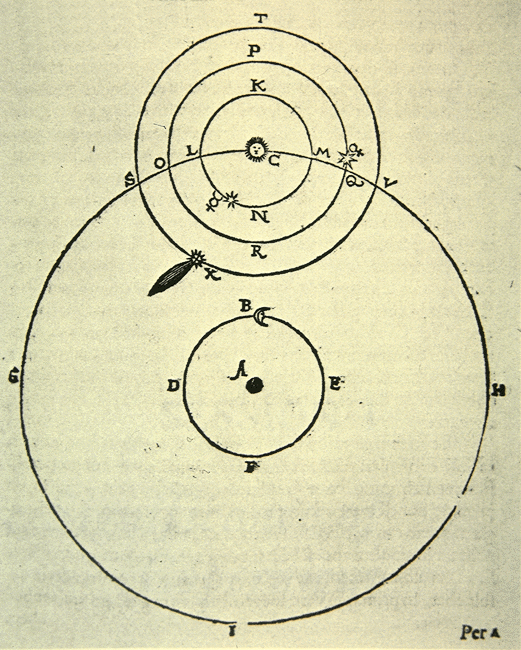Brahe Gets His Due – Finally
The offending title was on the cover of January’s Scientific American: “History of Science: The Case against Copernicus.” What? I love Copernicus; he’s amazing. How could this be?
In their article Dennis Danielson and Christopher M. Graney argue that rejection of Copernicus’ heliocentric argument wasn’t solely based on religious objections but on scientific grounds. Without getting into the science and math of it, suffice it to say that when the Danish astronomer Tycho Brahe (who sadly almost always comes in last in the ranking of great cosmologists in my grade 12 world history class) tried to make sense of Copernicus’ theory it seemed improbable because the size of stars would have to be far too big. From a modern perspective Brahe’s view was wrong, however, for the time, it was pioneering scientific advancement.
Here’s their view on Brahe:
“Brahe was a towering figure. He ran a huge research program with a castlelike observatory, a NASA-like budget, and the finest instruments and best assistants money could buy. … Harvard University historian Owen Gingerich often illustrates Brahe’s importance with a mid-17th-century compilation by Albert Curtius of all the astronomical data gathered since antiquity: the great bulk of two millenia’s worth of data came from Brahe. ”
This is music to my ears as I always try to argue in favour of this historical underdog. Even though Brahe was incorrect in mashing the geocentric and heliocentric models together, he was doing, as Danielson and Graney argue, what good scientists do: “rigorously disproving the strong arguments of others…”

Rice University, The Galileo Project, Tycho Brahe, Tychonic Universe, 1995, <http://galileo.rice.edu/sci/brahe.html> (Jan. 5, 2014).